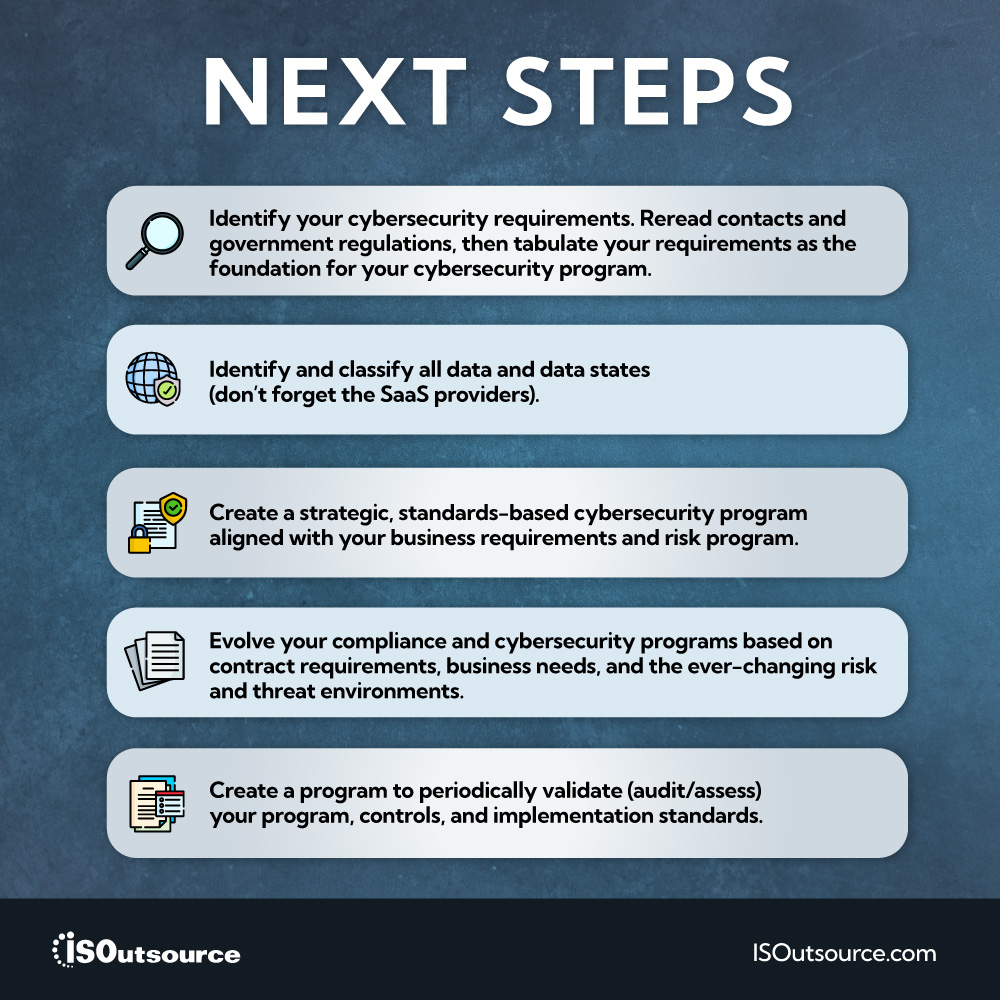It is tough and expensive to maintain compliancy for the Small to Medium Business (SMB) manufacturer. It almost takes a full-time compliance manager to track the myriad of local, regional, and international regulations for the manufacturing and sales of your products. The complexity is compounded by cybersecurity and technical requirements; often hidden inside contracts or linked references.
Many view cybersecurity and technical requirements as a nuisance, after-thoughts, or moving targets that can be ignored or minimal resources assigned against it. This is dangerous thinking leading to a wide range of vulnerabilities, cyber-attack vectors, and direct threats against your business.
Strategic thinking and planning are the only ways of achieving cybersecurity and technical compliancy in a cost effective and efficient manner. Start with indentifying your requirements, indentifying what requires protection, then creating a strategic plan to address compliancy and cyber security.
Identifying Cybersecurity Requirements. There is a growing trend to embed cybersecurity requirements into contracts; often, the requirements are hidden deep into clauses and sub-clauses. Many times, cybersecurity requirements have nothing to do with the actual manufacturing or sales of products, instead, the requirements are designed to protect the intellectual property and the associated business processes. The government has national security in mind for its myriad of regulations attached to contracts. After you identify the requirements, determine how/when the requirements are audited; audits and assessment range from self-attestation to third party accreditation.
Identifying What to Protect. It is important to know what and how to protect it. Start with simple data classification exercise that includes tagging data into specific categories then deciding on the appropriate protection levels. Common categories include Confidential, Proprietary, Public, and Unclassified; proper categorization ensures that the correct data is protected while not wasting money on data that doesn’t require it. Include all data types including common files like spreadsheets, documents, databases, email, hosted solutions, and messaging. Include data states such as data at rest, data in transit, and data in process. If you are expected to protect product information and you openly discuss it in email, then you need to protect your email systems (including linked devices like phone).
Achieving Compliancy and Cybersecurity. Most regulations do not document all cybersecurity elements required for an effective program. You should identify a standard like NIST CSF as your cybersecurity baseline then add the additional regulatory requirements. Establish a strategic, formal program by identifying the requirements, creating policies, establishing controls, designing and implementing a solution, then following up with testing. Effective compliancy and cybersecurity program align with identified requirements, business needs, and risk requirements; do not overengineer, overbuild, or overcomplicate your program.
Partnerships. Most SMB manufacturers minimally staff the IT teams resulting in a lack of regulatory, standards, and cybersecurity knowledge. This is an effective strategy if you have the correct partner that steps in to support your compliance and cybersecurity requirements.

If you need an IT partner to help increase efficiency, productivity and security in your manufacturing business, contact our knowledgeable team today.
